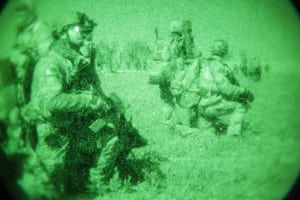Special Operations Command (SOCOM) is planning to double its investment in next-generation effects research, with a lead official signaling the focus of future projects will shift from precision strike to more cyber and electronic warfare capabilities.
Lisa Sanders, SOCOM’s director of science and technology, detailed the command’s new approach to research efforts which will look at decreasing its number of overall projects while emphasizing development of technologies that are “more disruptive in nature.”
“There are shifts happening. The overall number of projects is going down. There will be new projects in every focus area. But the number of [projects] will be larger in some [areas] and smaller in others,” Sanders said at the National Defense Industrial Association’s virtual Special Operations Forces Industry Conference.
Sanders said SOCOM projects it will invest around $150-$170 million per year on a steady portfolio of about 60 active projects, shifting from programs that cost about $1-$2 million per year on 18-24 month development timelines to $3-$5 million investments on projects that last three to five years.
For next-generation efforts, Sanders said SOCOM has been spending this year conducting studies and experimentation to understand future priorities ahead of potentially doubling investment and the number of active science and technology (S&T) projects.
“Next-generation effects, in the past, that was more oriented toward precision strike. We are shifting toward what is going to be required in that future operating environment,” Sanders said. “That’s not a bullet that goes farther. It’s not a more accurate sniper rifle. We think it’s going to explore the areas of cyber more. It’s going to explore the electromagnetic spectrum. It’s going to explore information as a means of achieving effects,” Sander said.
A chart Sanders discussed showed around a $16 million investment in FY ’21 toward next-generation effects, with that number jumping up to about $36 million in FY ’22.
One area that could see less S&T investment is next-generation intelligence, surveillance and reconnaissance (ISR), according to Sanders.
“My dollars overall aren’t going up a lot, so if I’m increasing in one area I have to decrease in another. We are achieving delivery of a number of things we started in the incremental domain in that portfolio, and we’re really looking at how do you fuse information together to gain and maintain situational awareness,” Sanders said. “It’s less about a new sensor and a new platform to hang that sensor on, which is the way we [typically] think of ISR.”